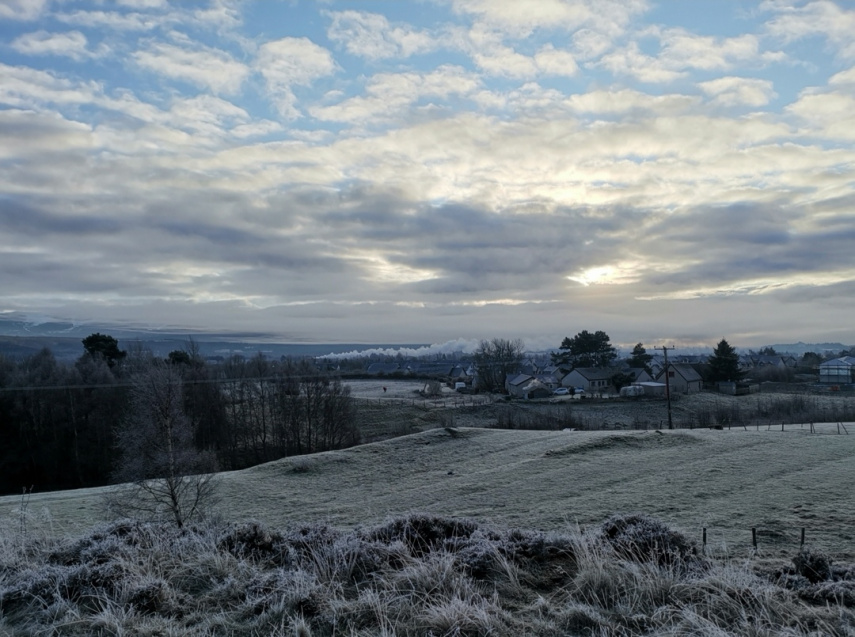
A look ahead at land reform
Andrew Thin
In our final blog of 2020, our Chair Andrew Thin looks back over the year and at what is ahead in 2021.
2020 has been challenging; the global Covid-19 pandemic forced us to adjust to new ways of life and of working. As a nation we have shown that we are adaptable and resilient in the face of change and our communities have stepped up to look after one another in a way that is as great as it is humbling. As we look ahead to the new year, 2021 promises fresh challenges for the future that will inspire us to do better, be better, and rebuild a better Scotland for all of us.
Our work in 2020 saw us publish a series of Protocols setting out practical expectations for normal responsible practice in land ownership and use, putting into action the principles of Scotland’s land rights and responsibilities statement. We published the significant recommendations from the Vacant and Derelict Land Taskforce on the re-use of land and provided advice to government on Regional Land Use Partnerships, both of which have the potential to shape our response to climate change and our economic recovery. In 2021, we will publish the conclusions of our review of land for housing and development, which goes hand-in-hand with using and reusing land in a responsible way to ensure that everyone benefits from Scotland’s land.
It is clearer than ever that land needs to be part of our economic thinking as we address recovery, renewal and climate action. Our new Strategic Plan carries us towards 2023, with a particular focus on how we can make land markets work more effectively – including potential changes to the tax system to support recovery and renewal, reviewing how land is valued, and identifying practical options to ensure land is better used in the public interest. The societal benefits of this shift have the potential to be game-changing but it is unlikely to be achieved by a return to the ‘old normal.’
The pandemic has laid bare stark inequalities across our society. With over 50% of the UK’s wealth held in land, the ways we own land are central to the kind of economy we shape. Our report from 2019 identified that the monopoly power over social and economic decision-making associated with concentrated land ownership remains a significant issue. In our recommendations to Scottish Government to address the adverse effects identified, and to stimulate a more productive, diverse and dynamic pattern of rural land ownership, we looked at both legislative change and action within ownership sectors. In the new year we will publish a discussion paper exploring how statutory changes, such as the introduction of a public interest test for significant land transfers, could work in practice.
In doing so we will look at what is established practice internationally and in other sectors of the economy. Many sectors have dedicated regulators, such as the Competition Markets Authority, with a variety of powers to issue codes of practice and guidance, often backed by enforcement powers to ensure operations meet expected behaviours. Given the central role of land in our economy, the same principles might sensibly apply.
These issues remind us that land reform is not a niche interest, but something that is central to driving the kind of economy Scotland wants. When the Land Commission was established it was, in part, to ensure land reform remains an ongoing process. It’s clear the next steps in this journey are even more important in helping communities, businesses and individuals not just recover but thrive.
The announcement by Scottish Government of the new £50m vacant and derelict land fund on Saturday highlights the significance and focus for land reform in urban Scotland. The fund is taking forward recommendations of the Vacant and Derelict Land Taskforce to transform Scotland’s approach to tackling the legacy of derelict land. Specifically, recommendation 12 to create a programme of green infrastructure investment. The fund demonstrates Scottish Government’s commitment to bringing these sites back into use to deliver multiple benefits for both communities and the economy. These sites could provide much-needed greenspace, growing space, community facilities, housing or businesses, attracting more inward investment and improving people’s wellbeing. Seeing urban land as a reusable resource, one that can be brought back into viable life to the betterment of local communities and the wider economy, will help to create a green and fair recovery for Scotland.
At the Commission, the new year will see us continue to drive fresh thinking and change so that the way land is owned and used meets the needs and ambitions of people across Scotland. And with our public meetings continuing in online format for now, we look forward to talking with many of you about what changes are needed.
Wishing you and yours a healthy and happy new year ahead.
